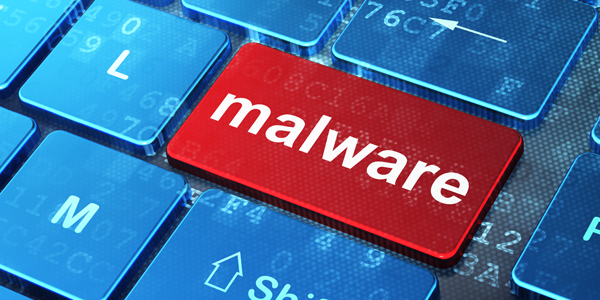A country as diverse and culturally rich as India offers advantages that are hard to replicate anywhere in the world. The country that brims with diverse cultures and cost-effective innovative solutions is also balanced with being one of the most sought-after technology sourcing destinations, and a rising development hub. No wonder the world is taking notice, and the next few weeks will see the country host the Olympics of the global ICT Industry, called the World Congress on Information Technology [WCIT].

A quick primer on WCIT to set the context- The World Information Technology and Services Alliance, called WITSA, is a consortium of associations in the Information & Communication Technology [ICT] industry, coordinating with industry bodies like the National Association of Software and Services Companies [NASSCOM]. WITSA represents around 90% of the global ICT market, and has been organizing conferences ever since called the World Congress on Information Technology [WCIT]. WCIT has become the default event where the crème-de-la-crème of the industry gather and discuss current and emerging trends. With just two developing Latin American countries among key developed and technologically advanced countries hosting the event, a South East Asian country like India playing the next host is testament to the fact that we have truly put our stake in the ground as a global tech hub.

However, having dwelt on how important India is in the technology world, making it an obvious choice to host an event like WCIT, one would wonder why Hyderabad, was chosen as the host city? Hyderabad has arrived at the right time, as businesses become more aware of adopting technology mandates to become more efficient, and gear themselves for a digital-first future. It has all the elements for technology enterprises of varying scale to set up operations: favorable policies for the IT sector, affordable real estate to scale operations, and sourcing premier talent from the region. Combine these factors with flattening growth in other cities, not being prone to climatic and political changes have only aided in accelerating its image. Growth has also multiplied due to concerted efforts by the government, industry bodies, and corporates. Hyderabad is fortunate to have had successive governments, including the current administration’s focus on making the city a top IT investment hub, through a range of measures.
WCIT needed a host city that could not only fulfill the criteria of running it smoothly, but also echo its vision and its legacy. The current government has surpassed everyone’s expectations. Case in point: The government has continued its push to become the top investment destination for the IT sector through a multi-pronged approach: Development of IT parks and clusters, Creating an ecosystem for developing quality talent, and Spreading growth to Tier II cities.
Also, another policy instituted that has set the precedent for favoring quicker turnaround time for investments is the Telangana State Industrial Project Approval and Self Certification System, also called TS-iPASS. The government has made itself accountable by giving deadlines to its auditing agencies to approve projects within 15-30 days, failing which the latter would be penalized.
These are just a handful of policies that have taken Telangana to the top, in the recent Ease of Doing Business rankings, along with consecutive double digit-growth in IT exports. Additionally, the government fostered a spirit of innovation and entrepreneurship, through the T-Hub, India’s largest incubator, and supporting policies. WCIT will be showcasing innovation with around 50 disruptive startups, which makes perfect sense in a rapidly maturing startup ecosystem here.
Hyderabad is also a melting pot of the past, the present and the future, something that resonates with how technology takes legacy and wraps new age tech around it. The vast heritage and legacy of the city is something that brings the culture of India to the fore, appealing to a global audience at WCIT. Delegates can treat themselves to other unique experiences, like a day at the world’s largest film studio called the Ramoji Film City or savour local food in the old city. Hyderabad is rising as a leading MICE [Meetings, Incentives, Conventions and Events] destination across the world, and it is no surprise that WCIT is taking place just a few months after the Global Entrepreneurship Summit.
References
- https://tech.economictimes.indiatimes.com/news/corporate/nasscoms-flagship-event-to-move-to-hyderabad-from-mumbai-after-19-years/60752219
- https://economictimes.indiatimes.com/tech/ites/why-india-is-seeing-a-fresh-wave-of-global-innovation-centres/articleshow/60238228.cms
- http://www.telangana.gov.in/PDFDocuments/Telangana_Innovation_Policy_2016.pdf
- http://indiatoday.intoday.in/education/story/world-congress-on-it-2018-india-to-be-the-host-for-the-first-time/1/414074.html
About the Author
Suman Reddy Eadunuri is the Managing Director, Pegasystems, India. Suman is credited with successfully setting-up Pega’s India operations in 2007, one of the country’s leading GICs. He built Pega India from ground-up that currently is at 1500 employees across Hyderabad and Bangalore, a third of the company’s total employee strength. As a key member of the of the global leadership team, Suman has played a key role in helping the organization grow from 126 million to 750 million over the last decade. He is an active member of several premier industry bodies, national forums and leadership clubs across India and beyond, like NASSCOM, CII, HYSEA, YPO and is currently a board member of TiE Hyderabad.









